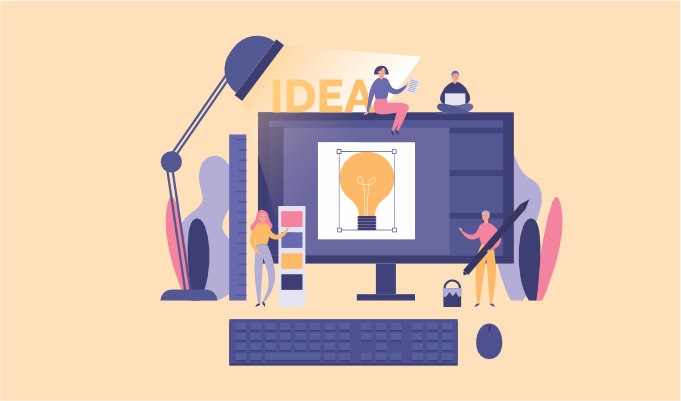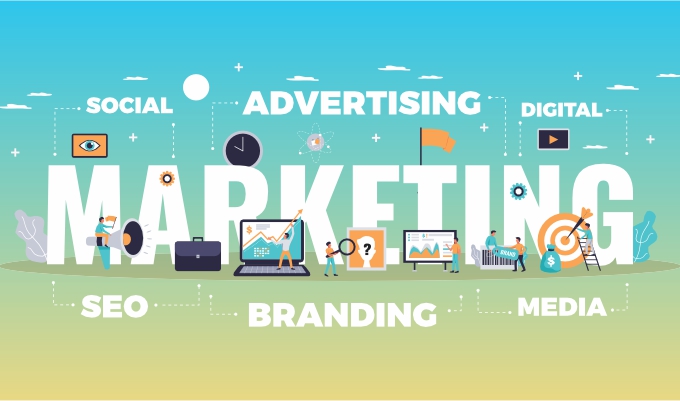
It may surprise you that practically all successful logo designers follow a set procedure. Did you know several issues might arise from not adhering to the correct procedure?
Lack of a correct design process can lead to several issues, such as losing credibility as a logo designer, overlooking crucial features (that may seem little), dealing with dissatisfied clients, being labeled as an amateur, and more.
You must establish a design process if you want to steer clear of these problems and become a well-respected, qualified logo designer. In need of assistance? Continue reading to learn the components of a creative logo design approach.
1 Creative Sketch
Here’s how to get started on a project as a participant:
Make sure you have read the creative brief thoroughly.
Recognize the company, sector, and offerings of the client.
If you’re interested in learning more about the client’s services or what kinds of logos they find appealing, ask them questions.
Also Read: Exploring the Evolution of Logos over Time
2 Research Process
Do a thorough investigation of the client’s business and sector:
Examine the many typefaces, colors, and design concepts that are utilized in the client’s specific industry.
To have a sense of the market, investigate the competitors of the client. Avoid letting research be the weak point in your logo design process as it could bring your entire project to a complete collapse.
Find out from the customer what colors, graphics, or design motifs they would like you to utilize, as well as what they hope the logo design will accomplish.
To demonstrate to the client that you are interested in the project and that you take it seriously, do some research and pose questions.
3. Start Sketching
Many designers miss this crucial stage in creating the design concept, but it’s crucial:
Start by jotting your ideas and thoughts on paper, as this helps ensure your concepts are executed accurately. It also enables you to focus on minute details while enhancing your creative process.
For ideas, look through various industry-related logo designs; nevertheless, do not duplicate them. Use of stolen ideas, clipart, stock pictures, or logos is prohibited.
You may develop ideas and create unique logo design concepts by sketching.
You May Like: Psychology of Color in Logo Design
4 Digitalizing the design
You are now prepared to transfer your thoughts to a computer when you have finished developing and drawing them:
Start utilizing graphics tools to create the logo design. The most widely used program among logo designers is Adobe Illustrator. You can learn how to use Adobe Illustrator online or by joining Graphic Design Courses in Rajkot who teach you the most used graphic design tools.
Play around with different concepts, perspectives, forms, and hues.
Several logo designs should be made, keeping in mind the main idea and objective.
5. Presentation
Choose the presentation method for the logo design:
Make sure you use Pantone colors and pick hues that complement one another without being overly garish.
Select the appropriate typeface for the logo. Make a thoughtful font choice based on the tone of the company.
Choose logo colors that complement the region and industry of your clients. Every industry has a set quantity of colors that are used. Particular industries view particular colors as professional, while others may view them as juvenile.
Think about the color scheme the client has provided and find out why using those particular colors is significant to them.
Design a logo that can be scaled up or down, and that will still look good when printed in a single color.
Showcase the top two or three best design concepts to your client so he/she will have ample choice.
6. Receive Feedback
Upon receiving feedback from the client, observe and comprehend:
Take a moment to view the situation through the client’s eyes and carefully consider their feedback.
After receiving the initial comments, follow up with the customer, make any necessary adjustments, and deliver one or two more samples (in other fonts or colors).
Take note of the input that clients have provided to other logo designers. This approach will enable you to better understand the client’s vision for their logo design.
Continue sending revisions and modifications until the client is completely satisfied.
7. Submit Final Files
Should you be declared the winner… Best wishes!
There’s only one more thing a winner needs to do before they can go celebrate:
Complete and submit the winning logo design files in the appropriate format.
You can read more on logo design file formats or get in touch with customer support if you’re still unclear.
The project owner will submit the prize money after the final files have been turned in.
Also Read:
Conclusion
A milestone visual presentation of the entire logo design process like this would greatly help when you are pressed for time and are swarmed with work. By persevering through the creative process of logo creation, you may satisfy your client. We’ve created this infographic to help you remember the above. You can use it as a checklist.





